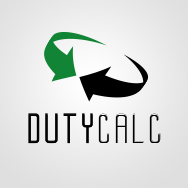Guides to Duty Drawback
Sector-Specific Guides to Duty Drawback
Duty Drawback Software | Import Export Consulting | Processing Filing | Full Service
Sector-Specific Guides to Duty Drawback
Duty drawback, a beneficial financial rebate program, serves as an indispensable asset across various industries, allowing companies to recover up to 99% of customs duties, taxes, and certain fees paid on imported goods that are subsequently exported or used in the manufacture of exported products. While the opportunity to reclaim these duties presents substantial financial incentives, the complexity of regulations and the specificity of application in industries like manufacturing, pharmaceuticals, automotive, and textiles pose unique challenges and opportunities.
In the manufacturing sector, duty drawback plays a pivotal role in offsetting costs associated with the importation of raw materials and components. Manufacturers, particularly those dealing in high-volume and low-margin goods, can significantly benefit from this program. However, the challenge lies in maintaining meticulous records that trace the journey of imported components through the production process to exportation. This requires robust tracking systems and often a dedicated compliance team to ensure accurate filing of claims.
The pharmaceutical industry, which frequently imports expensive raw materials and reagents, stands to gain immensely from duty drawbacks. The potential savings can boost competitiveness in international markets. Nonetheless, the stringent regulatory environment surrounding pharmaceuticals adds layers of complexity. Ensuring that all documentation aligns with both customs and health regulations demands a high level of scrutiny and cross-functional coordination within companies.
Automotive industry stakeholders also benefit from duty drawbacks, particularly because this sector involves intricate supply chains and the frequent movement of components across borders. The challenge here is the automotive industry’s reliance on just-in-time manufacturing processes, which requires precise synchronization of import-export timelines to optimize duty recovery. The complexity increases with the varied tariff classifications applicable to different automotive parts, necessitating specialized knowledge to navigate these classifications effectively.
Lastly, the textile industry, with its global supply chains, heavily utilizes duty drawback to mitigate the costs of importing fabrics and other materials that are processed and then exported as finished goods. The primary obstacle for textiles is the industry’s rapid fashion cycles, which can complicate tracking and matching imports with exports. Additionally, products undergoing substantial transformation may face hurdles in proving eligibility for drawback claims.
Each of these sectors can maximize their returns through efficient management of the duty drawback process, which involves staying current with regulatory changes, investing in proper documentation and tracking systems, and possibly engaging consultants who specialize in navigating the intricacies of the duty drawback scheme. Thus, while the potential for reclaiming duties is significant, the effort required to capitalize on these opportunities necessitates strategic planning and operational precision.





